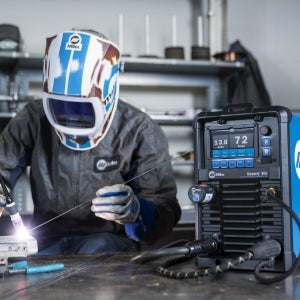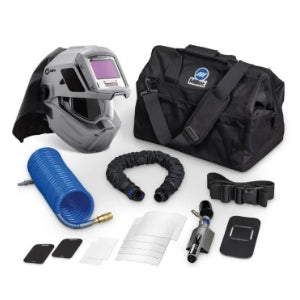A crack like a gunshot rang out as the baseball connected with the bat. Moving as a blur, the ball sped through the air, going higher and higher. The batter watched it out of the corner of his eye as he headed towards first base, hoping the ball's upward momentum would hold. But it didn’t.
As it reached its peak, the ball's vertical movement slowed to a crawl and then began plummeting back to the earth. What first felt like a potential homerun was going to be an easy catch for the left fielder. The player tracked the ball with his eyes, moving closer and closer to where he predicted it would fall. He’d done this a thousand times, he knew he’d catch it. Then suddenly, he was on the ground.

The player scrambled to get up, but it was too late. The ball landed just a few feet away with a solid smack that caused the ball to bounce up and away from the stunned fielder. As the player scanned his surroundings, searching for the culprit that had brought him so low, his eyes rested on his shoes. His laces had come undone, causing him to trip over his own feet. Over 15 years of grueling practice and hard-earned experience, and the most basic of basic actions had been his downfall.
Within the world of TIG welding, sharpening your electrode is the equivalent of tying your shoes. It’s a basic task, but it must be done correctly to produce a quality weld. Part of the challenge is that there are so many different opinions on the “real way” to sharpen your electrode. In this guide, we’ll look at what the professionals say about the right way to prepare your tungsten for TIG welding.
Rod Length
The tungsten electrodes used in TIG welding are generally quite hard and brittle. To get their electrode to the right length, some welders will snap them or use a hammer to break them in half. The problem with this is that it doesn’t lead to a clean cut. Instead, it often causes the tungsten to fracture lengthwise with the grain of the material. Often, these cracks might not be visible to the naked eye, but they can have a serious effect on your arc.
The proper way to cut your electrode to length is to use a jig that supports the tungsten on both sides of the cut. This prevents the brittle electrode from bending. Once the electrode is placed in the jig, a diamond cutting disk is used to cut the tungsten to length.

While the process described above is often thought of as the most correct way to cut your electrode to length, it does require a specialized jig. Because of this, welders often use other methods:
The 1st common method is to try and cut the electrode using the very edge of a sharpening wheel. The main issue here is that it’s difficult to get a clean cut. However, it is a significant step up from snapping the electrode by hand or with a hammer.
The other common method is to not cut the electrode to length at all. Instead, welders sometimes prefer to use a long electrode holder on their TIG gun, which allows them to equip the entire electrode without cutting it to length. According to some welders, a long electrode holder can be annoying, but this method is technically viable. In fact, many welders who work in the field will even sharpen both ends of a long electrode. This way, they can simply switch the electrode around when they need a new tip.
Electrode Types
Depending on the type of TIG welding you’ll be doing, you will need a certain type of electrode. For AC TIG welding, most experts recommend either a pure tungsten electrode or a zirconium tungsten electrode.
For DC TIG welding, you’ll generally want cerium tungsten, lanthanated tungsten or thoriated tungsten electrode.
Sharpening Your Electrode
When sharpening your electrode, it’s important to understand what you want the end shape to be. In general, the sharper your point is, the wider the weld will be and the more arch stability you’ll have. However, sharper electrodes also have shorter lifespans and less weld penetration.
Since different levels of sharpness produce different weld characteristics, the desired shape of your sharpened electrode will depend on your personal preference and the type of material you’re welding with. However, it is strongly suggested that once you pick a shape, you stick with it during that weld. Otherwise, changing your Tungsten’s shape will lead to inconsistent welds.

On a safety level, Tungsten dust is believed to be harmful to the lungs, so make sure you have the proper safety equipment when you’re sharpening or cutting your electrode.
Once you have an understanding of the shape you want, it’s time to start grinding. This is best done on a diamond grinding wheel as Tungsten is incredibly hard. You’ll want to grind in the same direction as the grain of your electrode. The vast majority of electrodes are made so their grain runs lengthwise. This means you’ll want to hold your tungsten parallel to the grinding wheel.
Some welders will use the edge of the wheel as they believe this allows them to fine-tune their sharpening. The issue here is that you can easily grind your tungsten in a direction different from the grain.
By placing the edge of your electrode against the grinding wheel similar to the example below, you can begin grinding down your electrode. You’ll want to continuously rotate the electrode in your hand as you grind, ensuring you get an even slope on all sides. Some experts also recommend you move the entire electrode in a slow S-pattern along the wheel, so you aren’t digging a groove into your grinding wheel. While this logically makes sense, you must be careful or you risk grinding your tungsten in a direction different from the grain of the electrode.

Once you reach your desired shape, inspect your electrode tip for cracks or broken bits. These will cause issues with your arc and need to be removed before you can begin welding.
By following the proper methods for sharpening your electrode, you can rest easy knowing you won’t be tripping over your shoelaces when it comes to TIG welding. Of course, the quality of your electrode can also have a significant impact on performance. Make sure you’re buying quality tungsten from brands you can trust. Welding Supplies from IOC has the best selection on the web, with unbeatable prices from top brands. Check out our complete collection of TIG electrodes here.





